#M43-mount
Text
Irix Lens: Irix release[s] a new [Fujifilm X] mount for all [Irix] cine lenses – Commentary

View On WordPress
#@IrixUSA#Arri PL mount#Canon EF mount#Canon RF mount#Fujifilm X-Mount#Irix#Irix cinema lenses#Irix Lens#Irix Lens USA#Leica L mount#M43-mount#MFT-mount#Micro Four Thirds mount#Nikon Z-Mount#Press Releases#Sony E-Mount
0 notes
Text

Well, that worked pretty well for an 88% waxing moon with the ZWO ASI071MC color camera. The near-full moon and Jupiter at opposition were just far enough away to make this set up work--plus a lot of 5-minute exposures. That band of red at the top left is the tail end of the ridge of hydrogen that runs behind the Horsehead Nebula (B33). Imaging notes: 63 x 300-second subs, no filters with the ZWO ASI071 color camera cooled to 0C, William Optics RedCat 15 Apo refractor, Sky-Watcher EQ6-R Pro mount. The Orion Nebula (M42), Running Man Nebula (Sh2-279), De Mairan's Nebula (NGC 1982,M43), and surrounding nebulosity.
More of my astro stuff here: https://SaltwaterWitch.com
32 notes
·
View notes
Text
So, Reddit is down (✊) and thus I turn to you tumblr, let's see what writing my wish on a piece of paper and letting the wind take it can do.
I've...gotten into birding and I have a Panasonic GH4 I used to use for videography that I'd love to turn into a bird photographing machine. Does anyone have any recs for a micro four-thirds telephoto lens at a decent price range that might get me started?
I also have a metabones Speed Booster XL for converting full-frame Canon EF-mount lenses to m43, but I think sticking with m43 lenses might be cheaper.
🐦⬛
#birding#photography#bird photography#micro four thirds#lumix gh4#lenses#do people use these tags? let's find out
4 notes
·
View notes
Text
M42/M43, NGC 1976, Orion Nebula
M42/M43, NGC 1976, Orion Nebula
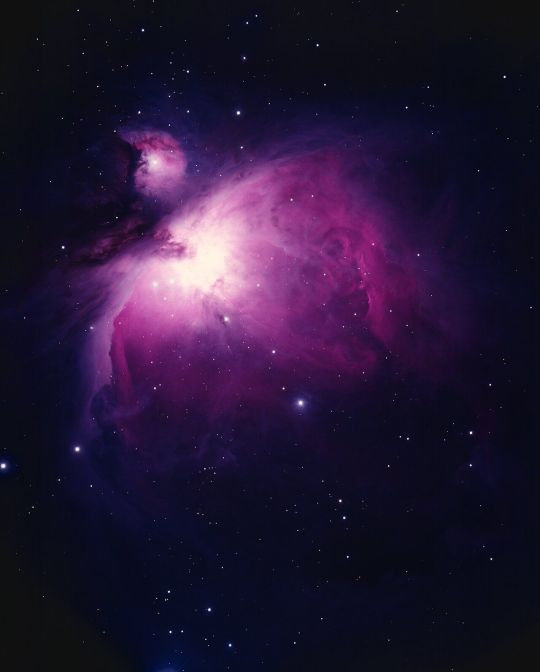

APOD: 2019 December 17 - The Horsehead Nebula

The Orion Nebula
First try with HDR in pixinsight, hope you like it ! -Equipment- Scope: TS-Optics 94/414 EPDH (414mm focal) Camera: ZWO ASI533MC Pro at -25°C gain 101 offset 49 Guiding: ZWO OAG Guiding camera: ZWO ASI 120MM Mount: Skywatcher AZ-EQ6 Filter: Optolong L-eXtreme -Acquisition- Light : 62x300s + 88x120s Total integration time 8h Dark: 100x300s Flat-50 Bias-100 100s120s Date : 30 January 2022 07,26,27 Febuary 2022 Location : France-Alsace Bortle 4/5 -Software- Carte du Ciel, N.I.N.A, Phd2 , PoleMaster and PixInsight Ez Processing Suite from darkarcon darkarcon website : darkarchon.internet-box.ch:8443/ -Pre Processing in PixInsight- Image Calibration Cosmetic Correction Debayer Subframe Selector Star Alignement Local Normalization Image Integration Drizzle x2 Dynamic crop -Processing *HRD* DBE 300s and 120s StarAlignement -> register 300s and 120s HRDComposition -> blend 300s and 120s frame Split L,R,G,B Chanel __L__ Ez_Deconvolution Ez_Soft Streatch HDRMultiscaleTransform StarNet++ for build nebula mask UnsharpedMask with mask LocalHistogramEqualization with mask __RGB__ ChanelCombination(RGB) BackgroundNeutralization PhotometricColorCalibration Ez_Soft Streatch HDRMultiscaleTransform Starnet++ SCNR star mask __LRGB__ LRGBCombination Ez_Denoise StarNet++ Final CurvesTransformation Save as jpg Clear skies !

Orion nebula M42 , SHO Hubble palette from Singapore.
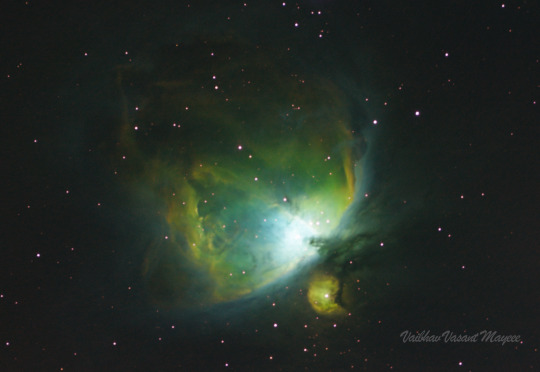
Horsehead Nebula in Orion
The Horsehead Nebula and Flame Nebula. This iconic deep-sky object is a dark nebula in the constellation Orion. Astrophotography tips, facts, and more.

Orion Nebula wallpaper by DLJunkie - Download on ZEDGE™ | 5dcb

Orion
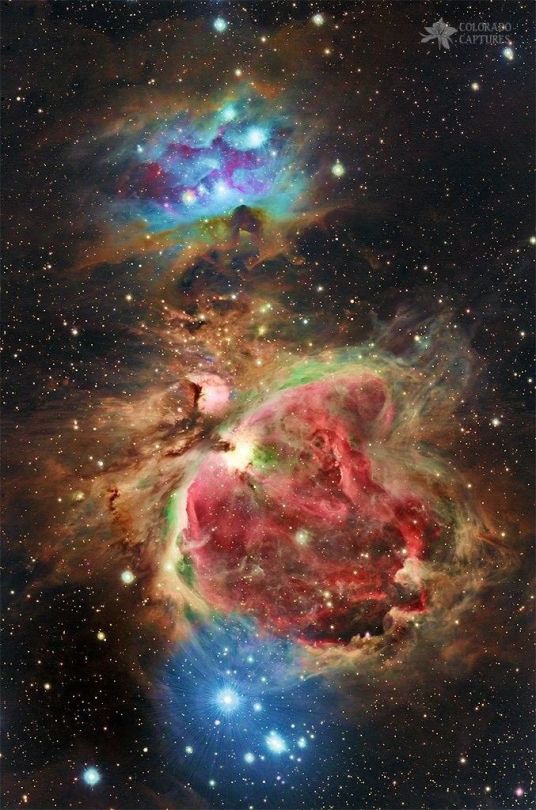
The Orion Nebula (M42/M43, NGC1976/1982) This picture shows the great nebula in the constellation of Orion the Hunter. On a good clear night, from a dark site well away from the lights of modern civilization, this glowing cloud of gas and dust can be seen with the naked eye as a fuzzy patch surrounding the star Theta Orionis in the Hunter's Sword, below Orion's belt. It is probably the most spectacular of all the objects cataloged by Charles Messier and now called by their `M' numbers. M42 had been known since the beginnings of recorded astronomy as a star, but it is so outstanding that it was first noted as an extended nebula in 1610, only a year after Galileo's first use of the telescope. Detailed descriptions started appearing later in the seventeenth century, and it has been a popular target for anyone with a telescope ever since. So many details are visible in even a small telescope that M42 will more than repay the observer who makes it a frequent target, and who will find that it is hard to make a realistic sketch that can capture all of the finer features. So outstanding is this nebula that it has two numbers. M43/NGC1982 is the separated portion to the north-east (top left), surrounding an irregular variable star. Although Messier stopped at only two, other parts of the nebula in this region have received further NGC numbers. M42 is our closest example of an HII region, being composed mainly of ionized hydrogen which gives off the red glow so dominant in every picture of the nebula. Deep photographs such as this one show that it is nearly a degree across, larger than the full Moon (although the Moon is so bright that it looks much larger). The energy to keep the nebula glowing comes from the very hot young stars in a formation called the Trapezium, embedded in the brightest part of the nebula and not visible in this photograph. The nebula and the brighter stars are very young indeed by astronomical standards, at about 30000 years. Compare this to our own Sun, which is considered to be a middle-aged star at over four billion years! M42 probably contains several hundred stars younger than a million years, still bursting with the energy of youth. Stars are still being born in a dense cloud behind the nebula, but they are hidden from our view by a concentration of dust which reduces their light to only a million-millionth of its original intensity. Fortunately, astronomers have developed special cameras and other detectors which are sensitive to infra-red radiation, more popularly known as heat, which penetrates the dust and reveals to us this stellar nursery. Although M42 is mostly hydrogen, in both neutral and ionized states, with a fair quantity of dust, it does contain significant amounts of other elements, especially oxygen. The green glow of doubly-ionized oxygen is strongest near the intense ultraviolet starlight at the middle of the nebula. To the north-east (the upper left in this picture) is a feature called the Dark Bay, which is a thick cloud of neutral gas which has not yet been ionized. Location: 05 hrs 35.4 min, -05 deg. 27 min (2000). Distance: nearly 500 parsecs (1600 light-years). Size: about 66 by 60 arc minutes. Mass: about 300 solar masses. Magnitude: 4.0. Power source: O and B stars. Photograph: Bill Schoening, KPNO 4m telescope, October 1st 1973. Original Ektachrome color transparency.Credit:Bill Schoening/NOIRLab/NSF/AURAUsage of NOIRLab Images and VideosAre you a journalist? Subscribe to the NOIRLab Media Newsletter.Image FormatsFullsize Original20.7 MB Large JPEG1.2 MBScreensize JPEG144.3 KBZoomableZoomableWallpapers1024x768131.3 KB1280x1024203.7 KB1600x1200314.3 KB1920x1200411.5 KB2048x1536568.3 KBCrossfade image:Optical (DSS2)Infrared (2MASS)Crossfade image:
2 notes
·
View notes
Photo
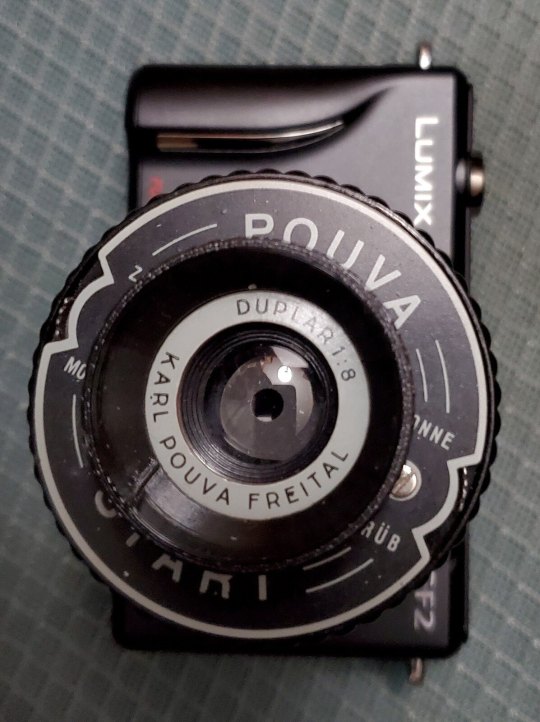

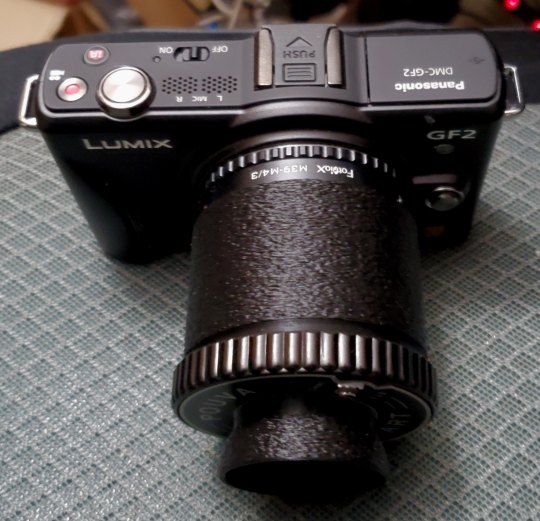
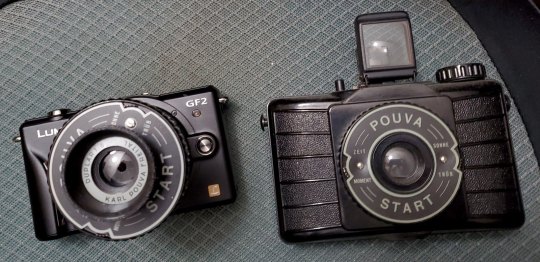
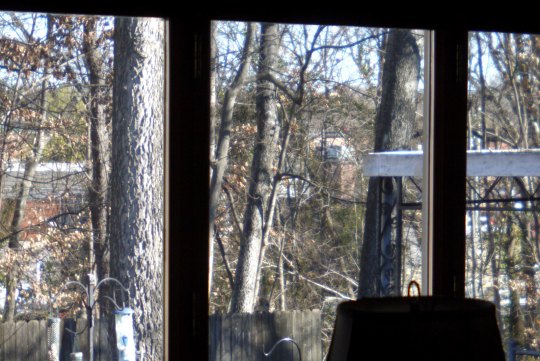
Pouva Duplar f8 80mm by Bill White
Via Flickr:
Pouva Start camera's Duplar lens removed and repackaged into m43 mount.
0 notes
Link
1. Compact functional lens: 7.5mm/F2.8 II fisheye lens with a maximum aperture of F/2.8. The nearest focusing distance is 0.12m. Wide focus at 180 degrees. 2. Wide compatibility :Compatible For Canon EOS-M bayonet cameras :M1, M2, M3, M5, M6, M10, change the camera to APS-C mode when you use 7.5mm/f2.8 on a full-frame camera. You can buy different versions for your camera without an extra adapter, Compatible For SONY E-mount, Compatible For Fujifilm cameras, Compatible For Nikon NZ cameras, Compatible For Panasonic cameras and Compatible For Olympus m43 cameras. 3. Ideal aperture with 12 blades and multilayer coating :12 diaphragm blades are crucial for favorable prominence in front and background. It provides high-quality transitions and beautiful bokeh for the shot, deliberately keeping the background blurred to keep the observer's attention focused on the subject. Multiple layers of coating can help the subject's visible spectrum successfully enter the lens, preventing constructive interference that distracts the observer, and producing beautiful 4. Portable aluminum base: aluminum body and copper bayonet design, 7.5mm/f2.8 II light weight to 278 grams, easy to carry shooting. There is also a foldable hood, which is convenient for your outdoor photography. 5. You can use it in panorama, macro photography, wide-angle photography, and headshots, among others. 7.5 Fish eye new upgrade, hood seal, optical structure is more stable, multi-layer anti-ghost coating Specification: Model :7.5m
0 notes
Video
youtube
[GIVEAWAY] TTArtisan 23mm F1.4 APS-C Lens for E/FX/EOS-M/M43/Z Mount is ...
3 notes
·
View notes
Photo

Peter L.
Seattle, Washington
Panasonic LUMIX GM1 (M43)
Finger strap-Lug-mount
Black leather, Gray wrapping cord
Integral strap bumper: Black leather
"A tiny yet mighty camera, the GM1, needs a functional yet elegant thumb strap. Gordy's design is just a perfect match."
Thanks for a great product!
3 notes
·
View notes
Text
I've changed to a new adapter/speedbooster for my BMPCC4K! Yay!
youtube
I started with a knock-off-of-a-Metabones-knock-off, the PhotoDiox M43/EF Adapter/Focal Reducer. It would really degrade the sharpness of my Canon glass, to the point that I thought the lenses themselves were just rotten. It would also fit extremely loose in the BMPCC4K lens mount, with very visible wiggle room that would start heavily distorting the images.
Before I forked over $700 for a proper Metabones adapter, I decided I better try a more highly reviewed knock-off brand first. Which is how I found Viltrox's M43/EF AF adapter/focal reducer.
It tests so well! I'll probably throw together a side by side comparison eventually. The difference is night and day. Where PhotoDiox was blurry and grainy, the Viltrox is sharp and clear. It's also giving me another half step of light over the PhotoDiox capability, and I'm loving the difference.
I may actually be able to use my current lenses for some real project work after all! And with no $700 lost on a Metabones adapter, either. Compared to the BMPCC4K-specific Metabones speedbooster, the Viltrox has some softness issues when my aperture is open wide. But otherwise, I couldn't spot the difference if I tried.
Happy day.
1 note
·
View note
Photo

The fog started to lift before I made it to the end of the pier, but still... ☁️ . . . 📸 [Camera] Olympus OM-D EM-10 Mark II . . . #getolympus #m43 #wanderlust #travel #adventure #exploring #journey #sober #soberliving #soberlife #soberissexy #addiction #addictionrecovery #recovery #recoveryisworthit #soberaf #soberphotography #lensbible #hope #faith #love #artthroughphotography #depressionwarrior #justinthomasmackie #charlestondaily #ravenelbridge #mistyfoggymilkymoody (at Mount Pleasant Memorial Waterfront Park) https://www.instagram.com/p/BsJx6DAhywo/?utm_source=ig_tumblr_share&igshid=dewt5zmyc56o
#getolympus#m43#wanderlust#travel#adventure#exploring#journey#sober#soberliving#soberlife#soberissexy#addiction#addictionrecovery#recovery#recoveryisworthit#soberaf#soberphotography#lensbible#hope#faith#love#artthroughphotography#depressionwarrior#justinthomasmackie#charlestondaily#ravenelbridge#mistyfoggymilkymoody
1 note
·
View note
Text
New Hardware: Sirui 24mm f/2.8 1.33x Anamorphic Lens
New Hardware: Sirui 24mm f/2.8 1.33x Anamorphic Lens

View On WordPress
#1.33x#anamorphic lenses#Canon EF-M Mount#cinematography#Fujifilm X-Mount#M4/3 Mount#M43-mount#MFT-mount#Micro Four Thirds mount#movie production#Nikon Z-Mount#Sirui#Sirui 24mm f/2.8 1.33x Anamorphic Lens#Sirui 35mm f/1.8 1.33x Anamorphic Lens#Sirui 50mm f/1.8 1.33x Anamorphic Lens#Sony E-Mount#Super 35#video production
0 notes
Photo

The Orion Nebula in Hydrogen-alpha - I have to capture M42, M43, NGC 1977, the Orion, De Mairan's, and Running Man Nebulae at least once a year, and now through December is when the Constellation is high in the sky and still early enough be awake--I captured the 52 subs that went into this shot between 11:30 and 2am. This is just one filter's worth. I have to go back and either take OIII and SII or Blue and Green, using this Ha capture for the Red channel in RGB.
Imaging session notes: 52 x 240 second subs + 50 x 10 second subs for the Trapezium, stacked in DSS, processed in PS 2021. SkyWatcher EQ6-R Pro mount, William Optics GT81 Apochromatic Refractor 392mm at f/4.7, ZWO ASI1600MM-Pro monochrome camera, Astronomik 6nm Ha filter, Controller: Raspberry Pi 4 4GB / 128GB running INDI/KStars/Ekos.
5 notes
·
View notes
Text
Анонсирован объектив 7Artisans 25mm F0.95 APS-C
Представлен сверхсветосильный объектив 7Artisans 25mm F0.95, который предназначен для беззеркальных камер Sony E / Nikon Z / Fujifilm X / M43 / Canon EOS M / L-mount с матрицей формата APS-C.... Читать дальше »
0 notes
Photo

The Great Orion Nebula (Messier 42, NGC 1970) in the constellation of Orion is the closest region of massive star formation to earth, and is so bright that is is visible to the naked eye. It is south of the three easily recognizable belt stars, and is the middle of the three sword stars that is clearly “fuzzy” in appearance, especially using binoculars. The nebula is 24 light years across and is estimated to contain the mass of 2,000 suns. Orion has a young open cluster at its brightest part containing 4 obvious stars referred to as the Trapezium, of which two are visual double stars, making a total of six. The coloration of Orion is an interplay of magenta coming from ionized hydrogen (red H-alpha and some blue H-beta), and blue/green or teal from doubly ionized oxygen (OIII). This coloration and detail was brought out from many long exposures using H-a and OIII narrowband filters. The nebula is part of a much larger complex known as the Orion Molecular Cloud Complex, which includes familiar astrophotography objects, such as Barnard’s Loop, M43 (shown in the above image as the tear-shaped object just north of the Trapezium), the Horsehead Nebula, M78 and the Flame Nebula. The Hubble Space Telescope found over 100 areas where planetary systems are forming around young stars, so the Orion Nebula is clearly a star and planet nursery. Exposure: 54.75 hrs Total; 42 hrs H-a and OIII, 12.75 hrs RGB Telescope: PlaneWave CDK20, 0.5 m f/6.8 0.54 arcsec/pix Mount: PlaneWave Ascension 200h Oag: Astrodon MonsterMOAG Acquisition: ACP-Expert Calibration: CCDStack2 Observatory Site: iTelescope, Siding Spring, NSW, Australia Camera: SBIG STX 16803 Filters: Astrodon 5nm H-a, 3nm OIII, Gen 2 RGB Guider: Starlight Xpress Lodestar Camera Operation: Maxim 5.24 Processing: Photoshop CC 2019 Image Date: 02/04/2018 - 08/01/2018 Credit: Astrodon #Astronomy #Astrophysics #Astrophotography #Cosmology #Stars #Space #Nebula #Sciene (at Deep Space) https://www.instagram.com/p/CPXQSRsDyE7/?utm_medium=tumblr
0 notes
Link
https://soundimageplus.blogspot.com/2018/06/leica-r-lenses-on-m43-panasonic-lumix.html
#leicar#leicalens#photography#m4/3#microfourthirds#speedbooster#lumixg9#soundimageplus#soundimageplusblog
1 note
·
View note
Text
"We Are On the Path of M43, We Will Not Go Full-Frame"
“We Are On the Path of M43, We Will Not Go Full-Frame”
For some time there has been repeated speculation that OM Digital was going to (or should) join the L-mount alliance, but in answering questions in its “Four Thirds Day” presentation with Panasonic reconfirmed that it has no plans to produce full-frame cameras.
In the hour-long video below, summarized by DigiCame Info, OM Digital’s Toshiyuki Tsumura, who is in charge of product strategy, answered…

View On WordPress
0 notes